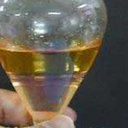The effect of New Zealand kanuka, manuka and clover honeys on bacterial growth dynamics and cellular morphology varies according to the species.
Клучни зборови
Апстракт
Treatment of chronic wounds is becoming increasingly difficult due to antibiotic resistance. Complex natural products with antimicrobial activity, such as honey, are now under the spotlight as alternative treatments to antibiotics. Several studies have shown honey to have broad-spectrum antibacterial activity at concentrations present in honey dressings, and resistance to honey has not been attainable in the laboratory. However not all honeys are the same and few studies have used honey that is well defined both in geographic and chemical terms. Here we have used a range of concentrations of clover honey and a suite of manuka and kanuka honeys from known geographical locations, and for which the floral source and concentration of methylglyoxal and hydrogen peroxide potential were defined, to determine their effect on growth and cellular morphology of four bacteria: Bacillus subtilis, Escherichia coli, Staphylococcus aureus and Pseudomonas aeruginosa. While the general trend in effectiveness of growth inhibition was manuka>manuka-kanuka blend>kanuka>clover, the honeys had varying and diverse effects on the growth and cellular morphology of each bacterium, and each organism had a unique response profile to these honeys. P. aeruginosa showed a markedly different pattern of growth inhibition to the other three organisms when treated with sub-inhibitory concentrations of honey, being equally sensitive to all honeys, including clover, and the least sensitive to honey overall. While hydrogen peroxide potential contributed to the antibacterial activity of the manuka and kanuka honeys, it was never essential for complete growth inhibition. Cell morphology analysis also showed a varied and diverse set of responses to the honeys that included cell length changes, cell lysis, and alterations to DNA appearance. These changes are likely to reflect the different regulatory circuits of the organisms that are activated by the stress of honey treatment.


